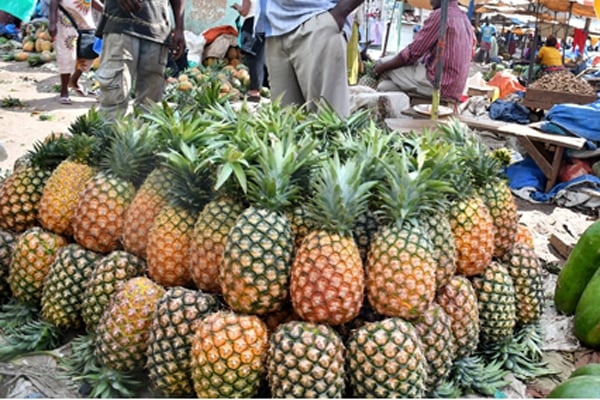Rise in seizures costing fruit, vegetable exporters

Horticulture, which includes flower exports, is Uganda’s forth largest foreign exchange earner with an annual growth of 13 percent. Photo / File
What you need to know:
- A study by Swisscontact indicates that interceptions increased to more than 100 in 2022 due to challenges presented by evidence of chemicals in produces and sometimes live pests
Increase in market interceptions and rejections is costing fruit and vegetables farmers and exporters, according to a study conducted by Swisscontact.
The study, which highlights a number of challenges in the fruits and vegetable export sector, indicates that whereas interceptions had remained flat at about 100 between 2016 and 2019, they increased to a record high in 2020 to about 170, before falling to under 80 in 2021.
However, the study indicates that interceptions increased to more than 100 in 2022 due to challenges presented by evidence of chemicals in produces and sometimes live pests.
The details where presented during a meeting of Uganda Sanitary and Phytosanitary Inspection Process for the Export of Fresh Fruits and Vegetables in Kampala at the weekend.
The study also indicates that at least 80 percent of the country’s fruits and vegetables, which are produced for export, are rejected yet Uganda remains one of the largest producer of the two commodities within East Africa but with the least obtainable value compared to Kenya and Tanzania.
For instance, the study indicates, in 2019 Uganda earned a little over $100,000 (Shs373m) from export of fruits and vegetables, compared to Kenya and Tanzania, which earned about $500,000 (Shs1.86b) and $550,000 (Shs2.05b) respectively.
In 2019, data indicates, Uganda produced 4,025 tonnes of fruits and 1,672 toness of vegetables.
Horticulture, which includes flower exports, is Uganda’s forth largest foreign exchange earner with an annual growth of 13 percent.
It is also a major employer, especially of women, who comprise 70 percent of workers in the sector compared to 30 percent of men.
Speaking on the sidelines of the meeting, Ms Caroline Nankinga, the Ministry of Agriculture assistant commissioner for phytosanitary and quarantine inspection services, said the persistence in interceptions had, therefore, forced government to seek a solution that would create a central and easily accessible inspection system.
“… today, we have learned, from a sample survey of 30 exporters that a lot of produce is wasted due to inspections and rejections and we also delay to prepare for consignments. This loss is 25 percent of the export bulk, which amounts to $72,000 annually,” she said.
Government, under the Ministry of Agriculture, together with Global Alliance for Trade Facilitation and Swisscontact, are seeking to digitise the inspection process of fruits and vegetables from the PAK house to the airport and eventual export as a way of improving quality and reducing rejections and interceptions.
Mr Fred Zake, the executive director of Hotifresh, which brings together fruit and vegetable exporters, said with 156 members, working with more than 25,000 farmers, digitising inspection is expected to take the industry to another level with the possibility of increasing earnings from export.
“Technology and data are crucial in this move. The promise is that by around June, the platform will be up and running, which is a great initiative to deal with downtime. We are also encouraging our members to enhance automation to work in line with government,” he said.





